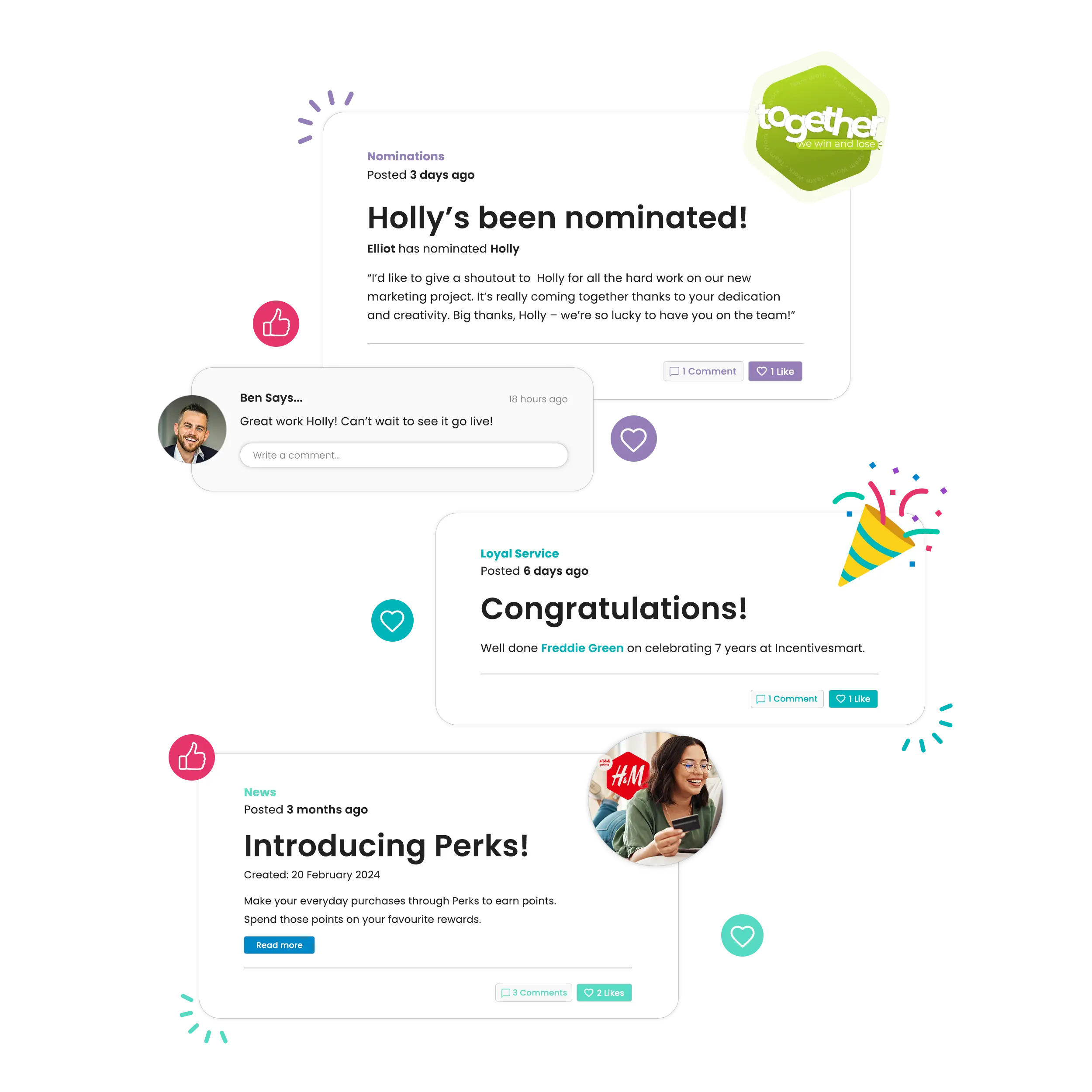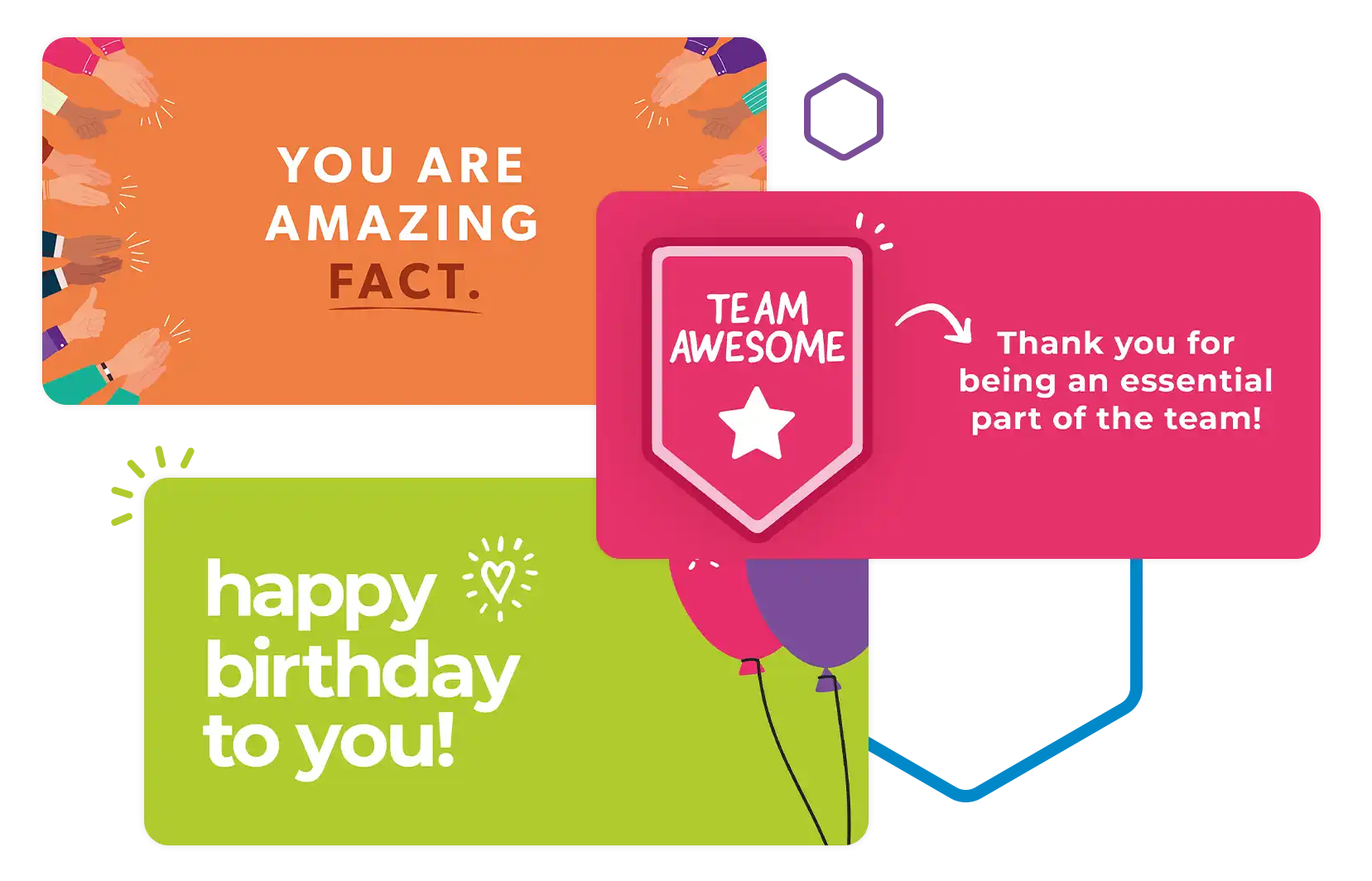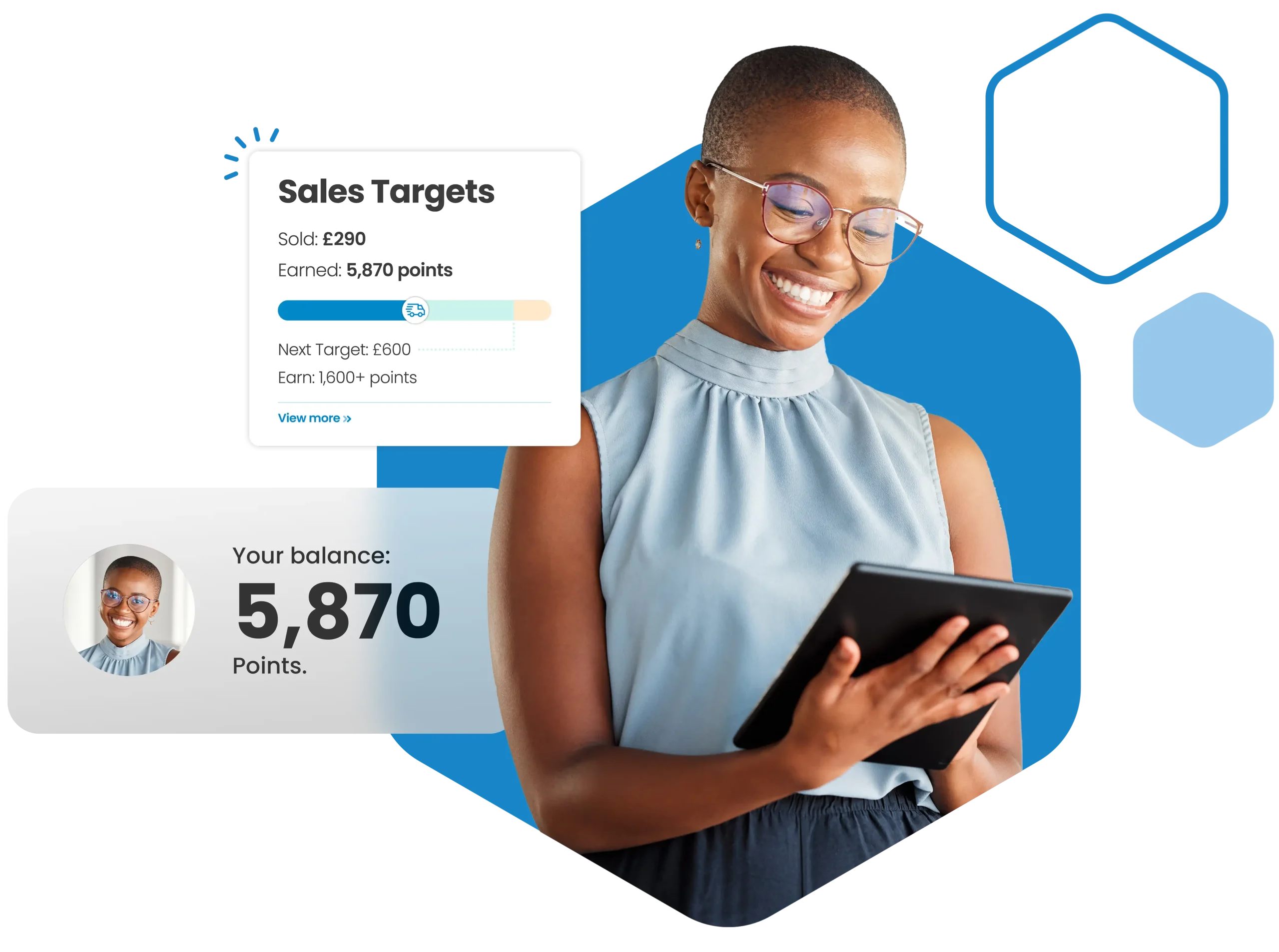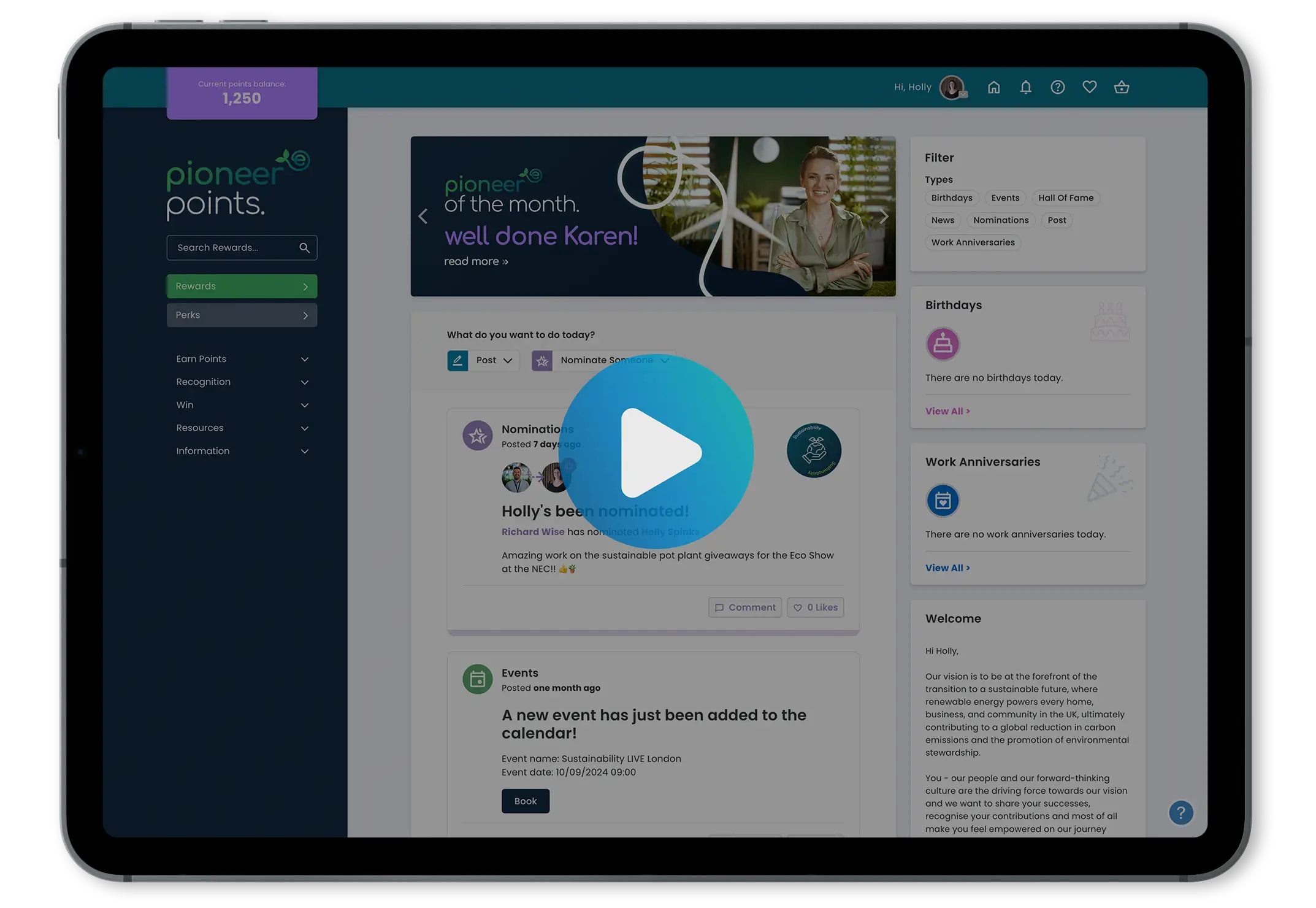


Peer-to-peer recognition is a way for colleagues to celebrate each other’s contributions directly. It’s an invaluable (and highly cost-effective) engagement tool that helps companies build an inclusive, motivational workplace culture that fosters strong team spirit.
In this guide, we’ll dive into everything you need to know about peer-to-peer recognition: what it is, why it matters and how to set up an impactful peer-to-peer recognition programme in your own business.
Plus, you’ll find some top peer recognition ideas and examples for inspiration.
Skip to:
What is Peer-to-Peer Recognition?
Peer recognition (also known as peer-to-peer recognition) is a structured way for employees to acknowledge each other’s achievements, big or small.
But, unlike traditional recognition, which often comes from managers or executives, peer-to-peer recognition is led by team members themselves. So, it allows every employee to celebrate each other’s efforts, not just those at the top.
A peer recognition programme encourages employees to share positive feedback and gratitude daily. Thus, stripping away any delays in recognition, keeping things immediate and ‘on-the-ground’.
Recognition can be as simple as a thank-you message, a shoutout during a team meeting or more formal gestures like a digital award. It’s about recognising everyday efforts and achievements, from the small wins to big milestones, making everyone feel valued.
Why Peer-to-Peer Recognition Matters
The way people feel at work can make or break an organisation’s culture.
And by setting up peer-to-peer recognition, you can transform the workplace in more ways than one.
You see, recognition from peers is often more meaningful because it’s direct, genuine and timely.
When someone’s efforts are appreciated by their colleagues, it enhances their mood and outlook. People feel seen and valued, which can make a huge difference to their day-to-day experience at work.

Here are 10 Measurable Benefits of P2P Recognition
Benefit 1: Increased Engagement
- Employees are twice as likely to be engaged when they receive regular recognition from peers.
According to Gallup, employees who feel recognised are 2.7 times more likely to be engaged at work compared to those who do not receive recognition regularly.
Benefit 2: Higher Retention Rates
- Organisations with strong recognition programmes experience 31% lower voluntary turnover.
A study by Deloitte found that companies with effective recognition programmes see improved employee retention as employees feel appreciated and are less inclined to seek employment elsewhere.
Benefit 3: Enhanced Productivity
- Recognised employees are up to 12% more productive.
Research from the Social Market Foundation indicates that employees who feel appreciated work harder and show higher levels of productivity.
Benefit 4: Improved Morale and Job Satisfaction
- Over 69% of employees report that they would work harder if they felt their efforts were recognised.
This statistic, from a study by OfficeTeam, highlights the impact recognition has on employees’ job satisfaction and morale.
Benefit 5: Stronger Sense of Belonging
- 65% of employees feel a stronger sense of belonging when they are recognised by their peers.
Peer-to-peer recognition builds a culture of camaraderie, where employees feel they belong and are part of the team.
Benefit 6: Positive Impact on Company Culture
- Recognition can increase employee happiness by 20%.
According to a study from the American Psychological Association, recognition has a direct impact on happiness, contributing to a positive and supportive work environment.
Benefit 7: Reduces Stress and Absenteeism
- Recognised employees experience 23% lower stress levels and are less likely to take unplanned leave.
According to Gullop, employees who regularly suffer from work burnout are 63% more likely to take a sick day and 23% more likely to visit the emergency room.
Benefit 8: Boosts Team Collaboration
- 70% of employees feel that peer recognition enhances team collaboration.
This statistic from SHRM shows that when people appreciate each other’s work, they’re more likely to communicate effectively and support one another.
Benefit 9: Happiness in the Workplace
- 56% of employees say peer recognition has the most significant impact on workplace happiness.
Peer recognition programs can be more impactful than manager recognition alone.
Benefit 10: Reduces Turnover
- Employees are 4x more likely to stay if recognised regularly.
Research by LinkedIn found that peer recognition holds long-term value and drives employee loyalty even more than financial incentives alone.
Top Peer Recognition Ideas for Your Workplace
Looking for some quick wins?
Well, here are some practical ways to show appreciation that can be incorporated easily…
Shoutouts on Digital Platforms
Many companies use messaging platforms like Slack or Teams. So why not create a dedicated channel where employees can post shoutouts and thank-you messages. This is one of the simplest and most effective peer-to-peer recognition ideas.
Digital Recognition Badges
Badges are a fun, gamified way to recognise colleagues for specific achievements. For example, you could create badges like “Problem Solver” or “Team Player” and award them when someone goes above and beyond. This adds a bit of friendly competition and excitement.
Celebration Boards / Walls of Fame
Whether physical or digital, a board where employees can share their achievements is a great addition to any office. It could feature everything from team wins to personal milestones. This visual display makes it easy for everyone to stay updated on each other’s successes.
Gift Cards and Vouchers
If you want to add a small reward element, gift cards or vouchers are excellent options. They are practical and can the retailer or communications can be personalised to suit each individual’s preferences. After all, even a small token of appreciation can go a long way.
Annual Peer Awards
Formalise peer recognition with annual awards based on peer nominations submitted throughout the year. These can include categories like “Best Collaborator” or “Innovation Star.” Awards, which could be presented at the Christmas party or Summer BBQ.

How to Get Started
Ready to kick start a P2P recognition programme? Here’s a step-by-step guide to getting it off the ground…
 Set Clear Goals
Set Clear Goals
Start by defining what you hope to achieve. Do you specifically want to improve team morale? Boost engagement index scores? Or something else?
Define specific goals that will guide the programme’s development. When you have clear goals, it’s easier to measure the success (and justify the time spent and any investment made in tech).
 Choose the Right Platform
Choose the Right Platform
Find a platform that supports your goals, makes recognition easy and is likely to be easily adopted across your entire workforce.
Tools like Slack or Microsoft Teams offer simple ways to recognise people with quick messages. There are also dedicated recognition platforms, like our own here at Incentivesmart, which provide more structured recognition options, such as recognition walls of fame, ecards and points-based rewards.
Be sure that you cater to employees in your office(s), warehouses, working from home, out on the road, etc.
 Define Recognition Criteria (based on company values)
Define Recognition Criteria (based on company values)
Decide on the actions and behaviours that warrant recognition.
A general ‘thank you’ is nice. But it lacks real lasting impact.
Whereas, recognising specific actions, like supporting a teammate or leading a project, can make it more meaningful. Which in turn encourages the behaviour to be repeated.
So it’s essential to set clear criteria to help people understand what’s valued and rewarded in the organisation.
Be sure to link all recognition back to company values, to embed them in the culture.
 Empower Employee Ownership
Empower Employee Ownership
Gather stakeholder feedback and use ideas from those on the ground to craft key aspects of the programme.
Let employees form a management committee to consider nominations for awards and organise related social events.
By relinquishing much of the scheme ownership to employees, you’ll encourage greater sharing of ideas and build trust that this isn’t just another ‘management fad’ (yet another flash in the pan initiative that quickly gathers dust).
 Step 5: Promote It (a lot!)
Step 5: Promote It (a lot!)
Make sure everyone knows about the launch of your new peer-to-peer recognition programme. Communicate its purpose and benefits through email, internal newsletters, posters and meetings. Encourage leaders to lead by example to show that recognition is important at all levels.
But don’t stop once the programme launches. You’ll need an annual communication plan to keep up momentum. Be sure to pack this with a combination of short themed promotions, longer-term initiatives and seasonal messaging to keep things fresh.
 Step 6: Gather Feedback and Adjust
Step 6: Gather Feedback and Adjust
After launch, gather feedback to make improvements.
Ask employees how they feel about the programme and what could be changed. Adjustments ensure recognition remains effective and enjoyable for all.
It’s essential to measure its impact and make improvements over time.
- Track Engagement:
Monitor how often employees are nominating their peers. High engagement is a good sign that people find it valuable. - Gather Feedback:
Collect feedback from employees to find out what’s working and what could be better.
- Celebrate Success:
Share stories of how the programme is impacting the team. This reinforces the importance of peer recognition and encourages continued participation.
Launch your own colleague recognition scheme today
An organisation’s culture is shaped by how people treat each other. And a peer-to-peer recognition programme promotes a respectful, appreciative culture. Over time, this positive environment will lead to a happier, more engaged workforce.
With a very low barrier to getting started, you’ve nothing to lose and everything to gain.










